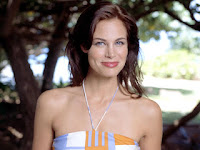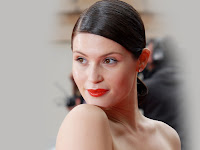Reading and Thinking (Part 2 of A Short Introduction to Thinking in Education and Technology)
Selasa, 21 Januari 2014
0
komentar
Last week I introduced an exercise to stimulate deep thinking about education and technology. You had to think of a question which interested you. The exercise didn't lead you to answer the question. Instead, the exercise aimed to highlight the CONSTRAINTS around the question you asked in the form of analytical constraints, critical constraints, and experiential constraints. This week I want to further explore this issue of constraint on thinking with regard to the process of reading in academic study.
When we get to University, people tend to assume we can read. Of course most of us can perform the mechanics of reading - we can read a passage of text out loud, we can gain a sense of meaning of a text, and so on - just like we were taught to do in primary school. But beyond acquiring the mechanics of reading in primary school, we tend not to re-examine what it is to read. Unfortunately, there are many side effects of our early reading education which can cause problems when reading at a higher level. The worst side effects are:
The texts I'm asking you to examine as part of the exercise are:
- The expectation that things should be read from the beginning to the end:
- Samuel Johnson famously said "who reads books through?" Academics tend not to read things from cover to cover. Usually the process is one of constructing an understanding of a book (or a paper) by frequently 'dipping in' and working backwards and forwards.
- The expectation that Reading is a separate activity to thinking:
- Reading and thinking are entwined. A page of a book is some kind of environmental stimulation of thought. We don't understand how this works!
- The expectation that the words of a text indicate the meaning of a text:
- There is an assumption that the meaning of a text can be revealed through laborious study of the words and their meaning. The words of a text in a book are signs of the constraints operating on the author. Your job is to get to know the author. C.S. Lewis reminds us that "We read to know we are not alone". You will rarely get to know an author through a single book.
- The expectation that the study of texts is hard work:
- This is the most damaging of all. My advice is that you should never read anything unless you do so feeling excited, curious and passionate about what you are doing. If you don't feel like that, do something else that will make you feel like that - and then read!
The texts I'm asking you to examine as part of the exercise are:
- T.S.Eliot - Notes towards the definition of culture - The introduction (available in the Amazon Preview): http://www.amazon.com/Notes-Towards-Definition-Culture-Eliot/dp/0571063136#reader_B004EPXXB0
- Gilly Salmon - E-moderating - "What is e-moderating?" and "Jane's diary" (available in Amazon Preview) http://www.amazon.com/E-Moderating-Gilly-Salmon/dp/0415335442/ref=sr_1_1?ie=UTF8&qid=1390247723&sr=8-1&keywords=gilly+salmon+e-moderating#reader_0415335442
For each one, the question is "How are they thinking?" - experientially, analytically or critically?
Baca Selengkapnya ....










.jpg)

.jpg)
.jpg)
.jpg)





.jpg)
.jpg)
.jpg)


.jpg)
.jpg)



















































.jpg)

